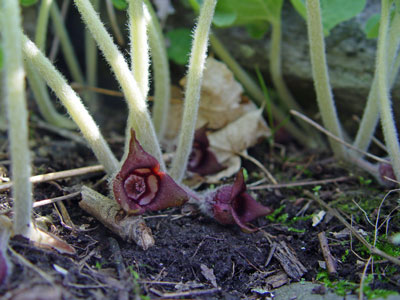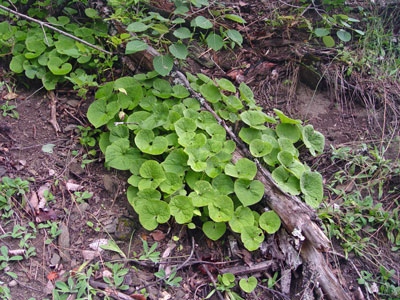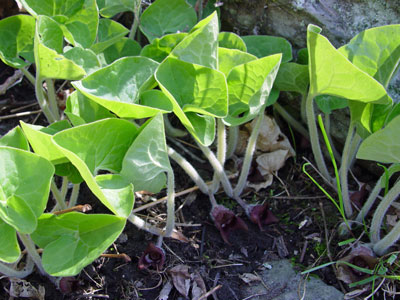DACF Home → Bureaus & Programs → Maine Natural Areas Program → Communities, Plants, and Animals → Rare Plants → Asarum canadense

Asarum canadense L.
Wild Ginger
- State Rank: S1S2
- Global Rank: G5
- State Status: Threatened
Habitat: Rich woods and in the vicinity of shaded calcareous ledges. [Hardwood to mixed forest (forest, upland)]
Range: New Brunswick and Quebec to Ontario, and Minnesota, south to North Carolina, Alabama, and Arkansas.
Aids to Identification: Wild ginger is a low perennial with two heart-shaped leaves (8-15 cm wide) arising on hairy petioles from a creeping rhizome with the distinct taste and smell of ginger. The single flower, purple-brown and with three long-pointed calyx lobes, grows at the base of leaves.

Ecological characteristics: Wild ginger spreads vegetatively and usually grows in extensive colonies. It is likely that it is extremely slow to establish itself from seed, so when eliminated from an area by digging or land development, it may be very slow to come back.
Phenology: Flowers in spring, in Maine usually in May.
Family: Aristolochiaceae
Synonyms: Asarum acuminatum (Ashe) Bickn., Asarum canadense var. acuminatum Ashe., Asarum canadense var. ambiguum (Bickn.) Farw., Asarum reflexum Bickn.

Known Distribution in Maine: This rare plant has been documented from a total of 15 town(s) in the following county(ies): Aroostook, Franklin, Kennebec, Oxford, Somerset, York.
Reason(s) for rarity: At northern limit of range.
Conservation considerations: Some known populations are vulnerable to conversion of their habitat to residential or commercial use. Because the plant requires shade, heavy logging where it grows could be detrimental; the effects of light to moderate logging are unknown.